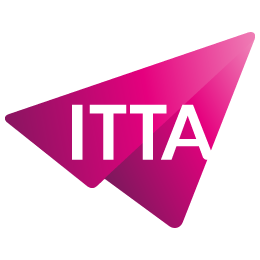Home > Trainings > Office Automation > Spreadsheet > Mastering the M language in Power Query
This intensive one-day training provides you with the essential tools to master the M language, the must-have tool for optimizing your data in Power Query, Excel, and Power BI. You will learn how to create advanced queries, efficiently manipulate your data, and automate complex processes. Through practical exercises, you will discover how to structure your scripts, optimize performance, and solve real-world challenges. Whether you are an analyst or a developer, this training will help you turn your skills into a true productivity driver.
Fundamentals of the M language
Module 1: Introduction to Power Query and the M language
Module 2: Basic syntax and data types
Module 3: Handling lists and tables
Module 4: Essential built-in functions
Advanced techniques and practice
Module 5: Creating custom functions
Module 6: Parameterised queries and error handling
Module 7: Optimising performance
Module 8: Practical exercises
The M language is much more than just a data transformation tool. It represents an essential step for anyone using Power Query in Excel or Power BI. This language allows you to automate workflows, optimize queries, and interact with your data in advanced ways. Whether you are a beginner or experienced, mastering the M language is a valuable skill for effectively managing your data processing and analysis projects.
Specifically designed for Power Query, the M language is a flexible and efficient tool. With its clear syntax and advanced functionalities, it simplifies data cleaning, transformation, and modeling. For example, users can handle large tables, manage complex lists, or apply conditional transformations. This intuitive and modular approach makes it an ideal choice for analysts and developers.
The best way to understand the M language is by applying it to real-life cases. For instance, learn to automate Excel reports, clean up databases in just a few clicks, or integrate parameterized queries into your Power BI projects. These practical exercises go beyond theory: they help you solve concrete problems and develop genuine expertise in data manipulation.
Once familiar with the M language, optimizing your queries becomes essential. By adopting best practices, you can reduce data processing time and ensure reliable results. For instance, simplifying steps in your scripts or using direct references improves not only performance but also the readability of your code.
What language does Power Query use?
Power Query uses the M language. This language, developed by Microsoft, is specifically designed for managing data transformation and manipulation. It is integrated into tools like Excel and Power BI.
What language is used in Power Query?
The primary language for writing queries in Power Query is the M language. It provides a simple and efficient syntax for handling complex data.
What is the preferred language in Power Query?
The M language is the preferred language for Power Query users. It enables automation of data flows and customization of transformations according to specific needs.
Which Excel version supports Power Query?
Power Query is natively integrated into Excel starting from the 2016 version. For earlier versions (2010 and 2013), it can be used by downloading a free add-in provided by Microsoft.
ven18juil09:00ven17:00Genève, Route des Jeunes 35, 1227 Carouge Etiquettes de sessionMLMPQ
ven22Aoû09:00ven17:00Lausanne, Avenue Mon repos 24, 1005 Lausanne Etiquettes de sessionMLMPQ
ven26Sep09:00ven17:00Genève, Route des Jeunes 35, 1227 Carouge Etiquettes de sessionMLMPQ
ven31Oct09:00ven17:00Lausanne, Avenue Mon repos 24, 1005 Lausanne Etiquettes de sessionMLMPQ

Nous utilisons des cookies afin de vous garantir une expérience de navigation fluide, agréable et entièrement sécurisée sur notre site. Ces cookies nous permettent d’analyser et d’améliorer nos services en continu, afin de mieux répondre à vos attentes.
Monday to Friday
8:30 AM to 6:00 PM
Tel. 058 307 73 00
ITTA
Route des jeunes 35
1227 Carouge, Suisse
Monday to Friday, from 8:30 am to 06:00 pm.